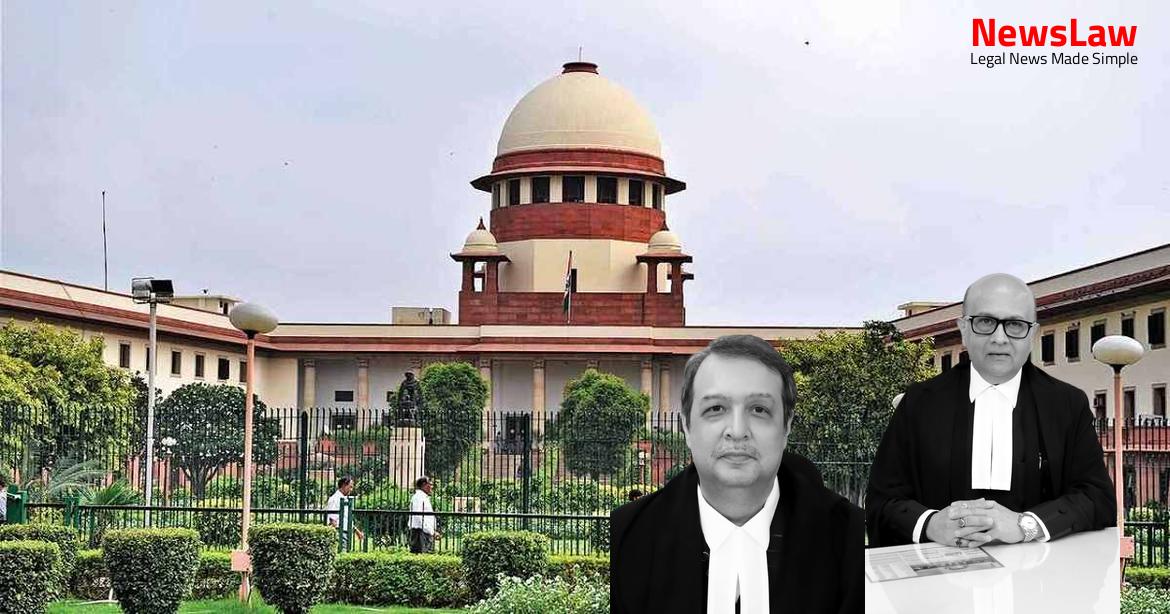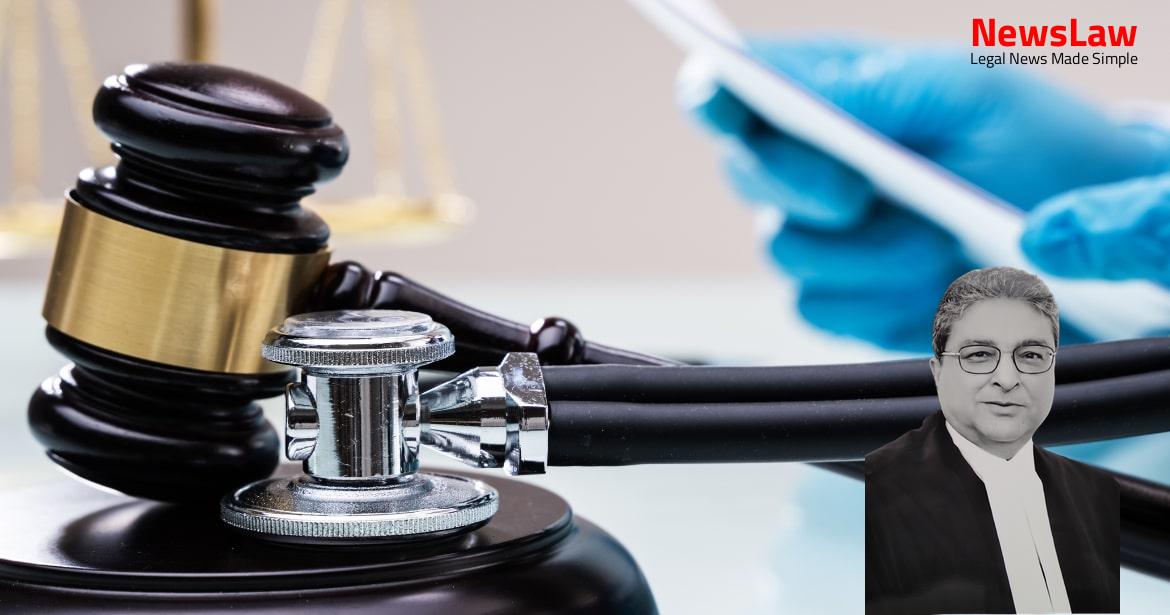In the case of State of India vs. Anees, the Supreme Court of India has delivered its judgement upholding the conviction for murder. The court carefully examined the evidence presented in the trial, including witness statements and forensic analysis. Despite the appellant’s plea of innocence and claims of being attacked by strangers, the court found the prosecution’s case to be convincing. The decision serves as a reminder of the importance of thorough investigation and adherence to legal procedures in criminal cases.
Facts
- The First Information Report (FIR) details multiple stab wounds on the body of the deceased, including cuts to vital organs such as the liver, pericardium, and heart.
- The appellant pleaded not guilty to the charge of Section 302 IPC and opted for trial.
- Various types of wounds, including incised wounds, scratches, and abrasions, were observed on different parts of the body.
- Witness statements revealed the strained marital relationship between the appellant and the deceased.
- The sole eye-witness, Shaheena, failed to support the prosecution’s case and was declared hostile.
- The knife used as the weapon of offence was discovered outside the appellant’s house and sent for forensic analysis.
- The investigation included the recording of statements, collection of blood-stained clothes, and examination of official witnesses.
- Several witnesses testified regarding the altercation between the appellant and the deceased, the demand for dowry, and the circumstances of the incident.
- The post-mortem report confirmed the injuries were sufficient to cause death and were likely caused by a knife or dagger.
- Shaheena, the daughter of the deceased, provided critical information in her police statement regarding the events of the night.
- The appellant stated in his Section 313 statement that he and his family were sleeping when two strangers caused injuries to his wife.
- He claimed to have tried to save her but got hurt in the process.
- The appellant professed innocence and mentioned that the attackers fled after causing the injuries.
- The trial court found him guilty of murder under Section 302 of the IPC and sentenced him to life imprisonment with a fine.
- In case of default in fine payment, additional rigorous imprisonment of six months was ordered.
- The appellant appealed to the High Court, which upheld the trial court’s decision.
- The High Court noted discrepancies in the appellant’s behavior post the incident and doubted his version of events.
- It was suggested that the altercation between the deceased and the appellant might have been triggered by her late arrival at home.
Also Read: Judgment on Quashing of FIR No. 95 of 2021 – Tanu Gupta v. Achin Gupta
Arguments
- Sayed Ali (PW-9), the panch witness, turned hostile and failed to prove the contents of the discovery panchnama.
- No motive was established by the prosecution for the appellant to commit the alleged crime.
- The prosecution did not question any witnesses regarding the alleged motive.
- The appellant’s behavior of staying at the place of occurrence was deemed inconsistent with the behavior of an assailant.
- The defense argued that the prosecution’s case relied heavily on circumstantial evidence, which needed careful establishment.
- S.I. Mohkam Singh (PW-17) admitted questioning Shaheena (PW-3) before forwarding the written report to the police station, raising doubts on the investigation process.
- The appellant’s explanation was deemed insufficient under Section 106 of the Evidence Act, but the prosecution failed to prove foundational facts for such inference.
- Reliance was placed on the case of Sharad Birdhichand Sarda v. State of Maharashtra (1984) to argue the prosecution’s failure to prove guilt beyond reasonable doubt.
- The burden of proof was highlighted, emphasizing that the prosecution cannot solely rely on Section 106 of the Evidence Act.
- Shaheena (PW-3), the sole eyewitness, did not support the prosecution’s case and hinted at the involvement of strangers in the incident.
- The conduct of the appellant at the time of the incident was not adequately considered by the lower courts.
- Appellant tried to fortify his submission by pointing out minor injuries suffered by the appellant.
- State’s counsel argued that the High Court did not commit any error in dismissing the appeal and affirming the conviction.
- The alleged crime could be seen as committed without pre-meditation in a sudden fight upon a sudden quarrel.
- Counsel for the State submitted that even if the prosecution’s case is believed, it would fall under Exception 4 to Section 300 of the IPC.
- Incriminating circumstances considered by both courts: deceased found in pool of blood, incident inside the house where appellant and deceased resided.
- The submission made by the appellant’s counsel is deemed baseless and without merit.
Also Read: Fertilizer Corp. of India Ltd. v. M/s Hindustan Polymers
Analysis
- The court should apply Section 106 of the Evidence Act in criminal cases with care and caution.
- The burden of proof upon any affirmative proposition necessary to be established as the foundation of an issue does not shift.
- The burden of evidence or the burden of explanation may shift from one side to the other according to the testimony.
- The ordinary rule that applies to criminal trials in this country is that the onus lies on the prosecution to prove the guilt of the accused.
- Positive facts must always be proved by the prosecution.
- If a judge feels that a witness has committed an error or slip, it is the duty of the judge to ascertain whether it was so.
- The court should have regard to the common course of natural events, human conduct, etc. in relation to the facts of the case.
- Presumption of fact is a rule in the law of evidence that a fact otherwise doubtful may be inferred from certain other proved facts.
- The court cannot suo motu make use of statements to police not proved and ask questions with reference to them which are inconsistent with the testimony of the witness in the court.
- Presumption is a course recognized by the law for the court to rely on in conditions such as this.
- The prosecution established foundational facts that justified invoking Section 106 of the Evidence Act.
- Section 106 places the burden on the accused to explain facts within their special knowledge.
- The court observed that burden of proof in a criminal case lies on the prosecution.
- Exceptional cases where it is difficult for the prosecution to establish facts known to the accused are covered by Section 106.
- Cases involving crime within a house face challenges in the prosecution’s burden of proof.
- The appellant’s conduct and actions suggested guilt in the context of the murder case.
- Instances where the accused fails to provide a reasonable explanation can strengthen circumstantial evidence.
- The burden to establish facts is lighter under Section 106 compared to direct evidence cases.
- The court analyzes conduct as a relevant factor under Section 8 of the Evidence Act.
- Child witnesses require special considerations in court proceedings.
- In the specified part of the judgment, the relevance of conduct and statements in a criminal case is discussed.
- Exception 4 is highlighted, stating the conditions under which culpable homicide is not considered murder.
- Four conditions need to be met for an act to fall under Exception 4, including sudden fight, no premeditation, act done in heat of passion, and no undue advantage taken.
- To invoke Exception 4, death must be caused without premeditation, in a sudden fight, without undue advantage or cruelty, and the fight must have been with the person killed.
- The burden of proving intention is on a person when doing an act with an intention different from what the act implies.
- An example is given where A is charged with traveling on a railway without a ticket, emphasizing the burden of proof on A.
- Appellant is granted liberty to prefer representation to State Government for remission of sentence
- Mitigating circumstances such as social, economic factors, value erosion, parental neglect, stress of circumstances, temptations in affluent or impoverished environment may lead to crime
Also Read: Railway Freight Charges Dispute: Hindustan Petroleum v. Indian Railways
Decision
- Pending applications disposed of.
- Judgment and order on sentence passed by the Trial Court affirmed.
- If appellant files any representation, State Government to review and decide within four weeks.
Case Title: ANEES Vs. THE STATE GOVT OF NCT (2024 INSC 368)
Case Number: Crl.A. No.-000437-000437 – 2015



